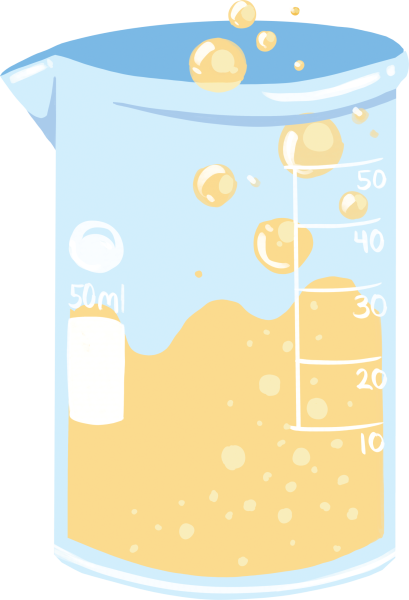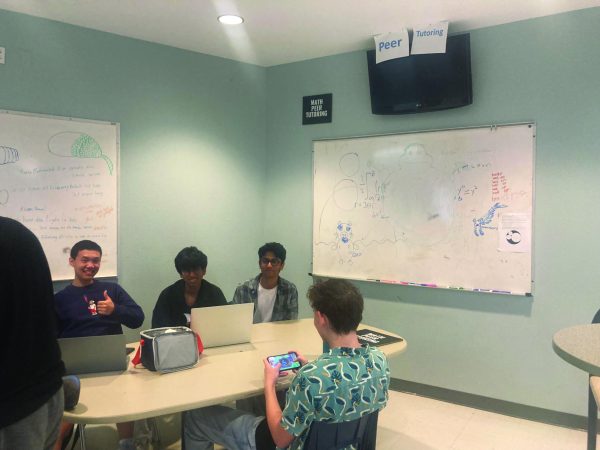Social Media and Attention Span: Students Feel Effects
May 15, 2023
On many social media platforms, there is a form of video known colloquially as “Family Guy TikToks” or “Subway Surfers videos”, due to the fact that they feature multiple different subjects on one half of the screen and a mobile game on the other, effectively splitting the attention of the watcher. The popularity of these videos have been criticized by many as contributing to social media’s detrimental effects on attention spans, which, according to interviewees, could eventually lead to negative changes in the entertainment industry and adolescents as they continue their development.
For freshman Liam Harris, watching multiple pieces of content simultaneously in a short amount of time easily becomes distracting and addicting. According to Harris, despite how harmless the videos may seem, their easy access can lead users to consume many of them in quick succession, losing track of time in the process.
“I have found that some of the most creative and least creative things appear in short, attention grabbing video formats,” Harris said. “I often am looking for something or accidentally click on one and suddenly find myself gain consciousness around an hour later once I realize that I have been stuck in the same position and proceed to leave whatever social media I am on at the given moment.”
According to Harris, these short, attention grabbing videos have been growing in popularity exponentially in recent times. In his opinion, it is how easily digestible the videos have become that has allowed them to be pumped out more rapidly over time online.
“I think it is the constant feed of videos flowing at the viewer,” Harris said. “The ‘Funny Family Guy Clips’ and ‘r/AskReddit Text-To-Speech’ videos have been a YouTube phenomenon for a while now, but because short-form content has grown and attention spans have shortened, singular clips from the show along with another easily understandable video, usually Subway Surfers or Minecraft parkour, match the need for a constant rush of dopamine.”
According to Harvard University, dopamine is a neurotransmitter that causes a feeling of reward or pleasure when released into the brain which can play a role in furthering addiction when released excessively by doing one activity. As freshman Auden Sandvik claims, short-term content has been linked to excessive release that can lead to higher levels of tolerance, which can make other activities seem unexciting over time.
“You have receptors that receive the dopamine, and the more dopamine you receive, the higher tolerance to dopamine they have,” Sandvik said. “So, when you do things not on TikTok, your dopamine receptors, they do get some dopamine, but they just don’t feel anything. You’re not going to be happy when you do things because your dopamine tolerance is so high. How that ties in with attention span is when you sit down, do something like homework, and you listen to music, or pretty much anything else, you don’t get any dopamine, so you’re not happy.”
Brad Sharp is an English teacher at LASA and he has noted that decreased attention spans among adolescents has carried over negatively into the real world. He said the most likely cause of the phenomenon is social media.
“Because of [social media], we have lost any ability to have sustained attention,” Sharp said. “…Your teachers are not your social media content or entertainers. We have 90 minutes, and to sit still for 90 minutes is an anathema to most students, to pay sustained attention.”
According to Wired, attention spans have been severely affected by social media, with internal TikTok survey data showing that 50% of users considered videos longer than one minute stressful and a third of users watch online content at double speed regularly. As Sandvik testifies from personal experience, attention spans can also affect what daily tasks and activities people can find stressful or daunting to complete.
“For me personally, sometimes getting homework done or going to the gym can be harder if I’ve watched a lot of YouTube,” Sandvik said. “Getting to sleep can be hard. Doing homework can be hard sometimes, but generally I’ve gotten better at those things.”
Due to the sheer effect short, attention-grabbing videos and social media has had on individuals as a collective, it is likely that, according to Sandvik, the entertainment industries will adapt their content to decreased attention spans in the near future. In Sharp’s opinion, they already have.
“You can look at any entertainment industry,” Sharp said. “Look at popular music: song links are shorter, no one can consume an album of 12 songs, 55 minutes. Every major movie is a comic book of some sort with timed laugh lines, explosions, bright lights, and jump cuts because we can’t sit still. No one is making content anymore that forces even a child to sit still for 22 minutes.”
Sharp’s view that industries are already adapting to decreased attention spans is echoed by Harris. However, unlike Sharp, Harris said this decreased attention span is a sign of what he calls an impending burnout of this form of content.
“I think that with the lack of a strong attention span in the average consistent viewer of these sorts of videos shows that there has to be a point to how short or bright or flashy videos have to become,” Harris said. “…Overexposure nearly always leads to burnout. I think that if the entertainment industry feeds into this more than it does through ads and promotional videos, then the speed at which this burnout can happen is significantly increased.”
While social media’s addictiveness has the potential to be its own downfall, Sandvik feels that there are benefits social media brings that cannot be disregarded. In Sandvik’s view, information from social media can be as authentic as from mainstream sources.
“I don’t necessarily think social media is all bad because it’s very useful as a first person news source,” Sandvik said. “Sometimes the news sources can distort things, and that’s why it’s important to have social media, but understanding the effects of it and how it works can help with those issues.”
With the interconnectedness of the internet and social media comes not only addicting content and real-time news, but also an ability to learn massive amounts of knowledge with relatively little effort. For many like Sandvik, the latter aspect of the internet is arguably its best in spite of its other negative features.
“If you’re going to YouTube, and you’re watching Minecraft videos or YouTube shorts, then that’s not helping,” Sandvik said. “You’re not learning anything: the videos are shorter, and
they’re just funny. They’re just there to spike your dopamine. However, if you’re looking at news sources on social media, if you’re looking at things that actually affect real life that you’re not getting so much dopamine from, then it’s not going to make you necessarily addicted to it.”










